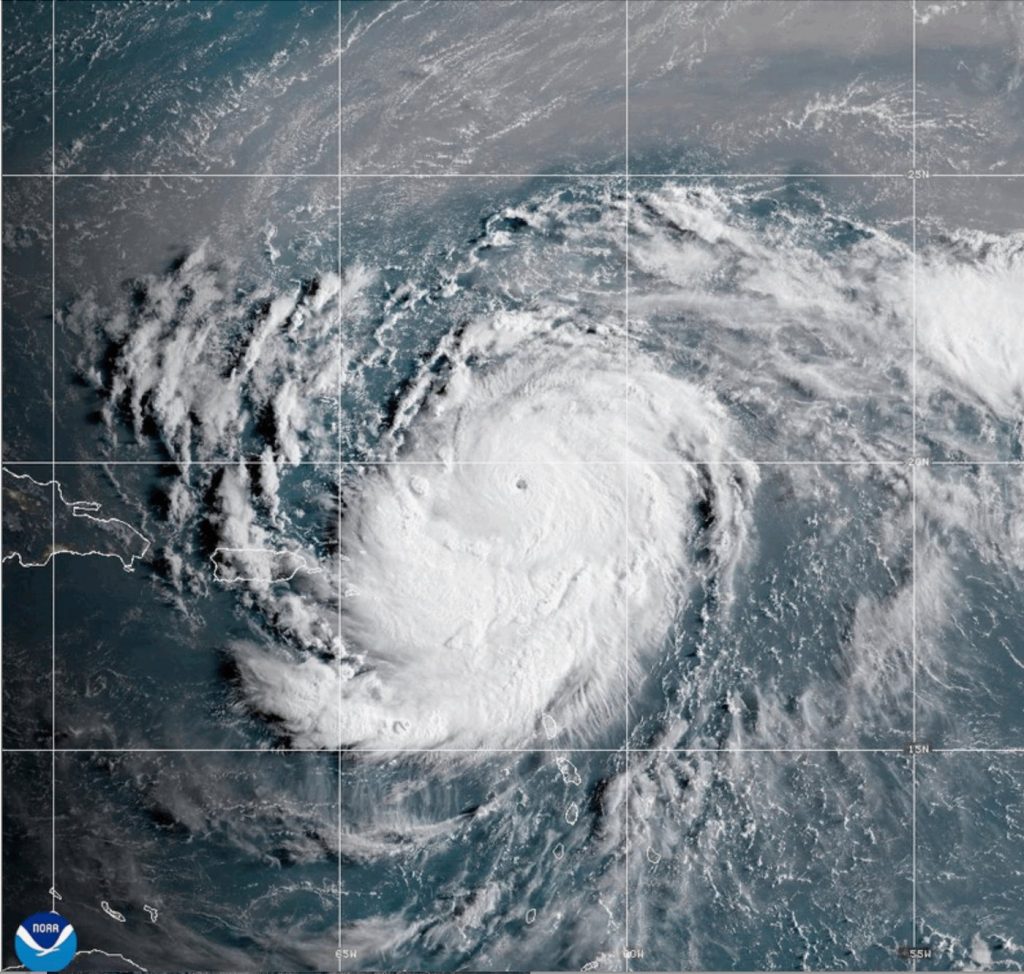Hurricane Erin rapidly intensified into a major storm in the Atlantic Ocean on Saturday, August 16, 2025, just north of the Caribbean. Originally a tropical storm, Erin surged to Category 5 status within 24 hours before slightly weakening to a Category 4 hurricane, boasting maximum sustained winds of 140 mph (220 kph), as reported by the National Hurricane Center in Miami.
As of late Saturday night, Erin was undergoing significant structural changes but remained a formidable force, with heavy rain and strong winds affecting Puerto Rico and the Virgin Islands. The storm's center was approximately 145 miles (230 kilometers) north-northeast of San Juan, Puerto Rico, moving west-northwest at 14 mph (22 kph). Although it was not expected to make a direct hit on land, forecasters warned of flash flooding, landslides, and mudslides due to heavy rains in some regions.
The National Weather Service in San Juan issued alerts for nearly two-thirds of Puerto Rico, cautioning residents of potential winds reaching 50 mph (80 kph) and recommending sheltering in safe structures. Approximately 130,000 customers lost power across the territory, while tropical storm watches were also announced for St. Martin, St. Barts, and the Turks and Caicos Islands.
Despite warnings, many locals and tourists continued their activities in Puerto Rico's capital. Sarah Torres and Joanna Cornejo, visiting from California, chose to enjoy the beach, believing the weather to be calm. "The weather looked fine, so we came out," Torres remarked.
In response to the approaching storm, the U.S. government deployed over 200 personnel from the Federal Emergency Management Agency and other agencies as a precaution. Puerto Rico's Housing Secretary, Ciary Pérez Peña, reported that 367 shelters were inspected and prepared to open if necessary, while officials in the Bahamas also began preparations for the storm.
Experts noted that Hurricane Erin's rapid intensification was remarkable, with its winds increasing by 60 mph (96 kph) in merely nine hours. Hurricane specialist Michael Lowry referred to the pace of Erin's growth as “incredible for any time of year.” Historical data indicates that only four other Category 5 hurricanes have originated in the Atlantic before August 16, with the hurricane season traditionally peaking in mid-September.
Among the other rapidly intensifying storms, Hurricane Wilma achieved Category 5 status in less than 24 hours in October 2005. So far in the Atlantic, there have been a total of 43 hurricanes that reached Category 5, and Erin's emergence marks the fourth consecutive year to witness a storm of such magnitude. Meteorologist Dan Pydynowski emphasized the rarity of these occurrences, while noting that climate warming has been linked to the increasingly rapid intensification of hurricanes, causing greater challenges for forecasting and emergency planning.
The ongoing Atlantic hurricane season, running from June 1 to November 30, is predicted to be unusually busy, with forecasts estimating six to ten hurricanes this season, of which three to five are expected to attain major status with winds surpassing 110 mph (177 kph). As Erin develops, warnings of powerful rip currents affecting the U.S. East Coast, stretching from Florida to the mid-Atlantic, are expected throughout the upcoming week, regardless of the storm's forecasted offshore path.










